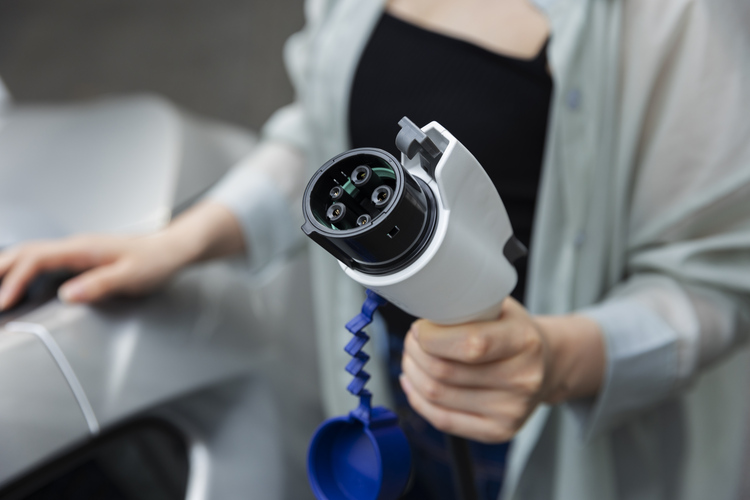The battery technology in EVs has advanced rapidly over the past decade, increasing the range capabilities of electric vehicles. When the Nissan Leaf launched in 2010, it was among the first affordable electric cars designed for the average consumer. It offered an expected range of approximately 160 kilometers, an impressive range for its time. While other electric vehicles existed at the time, the Leaf made EVs as a viable alternative to gas-powered vehicles possible.
Fast forward to 2024. The landscape and EV market has changed dramatically. Nearly every automobile brand offers their own long-range electric car, including luxury brands like Lamborghini. Their goal is to meet consumer demands for sustainable vehicles and capture the most relevant and profitable customers. These customers expect their EVs to handle longer distances without having to charge several times per trip. Fortunately, the evolution of EV battery technology has made it possible to meet these demands.
The Evolution of EV Batteries
Norway’s vast distances between towns and cities is one of the main reasons consumers demand long-range electric vehicles. We require cars capable of traveling far beyond the 160 kilometers that were available with the early Nissan Leaf. Fortunately, EV battery technology has evolved significantly since the Leaf’s launch in 2010.
The earliest variants of EV batteries, lithium-ion batteries, were quite limited in their energy capacity. This restricted the range a car could travel per charge. Advancement in technology allows modern batteries to store more energy in the same physical space as the original batteries. For instance, the 2024 model of the electric car Nissan Leaf S offers an expected range of 240 kilometers. That’s an 80-kilometer improvement without any major physical changes to the battery. But how is this possible?
- Improved materials: Thanks to high-energy-density lithium compounds, the battery can now store more energy in the same amount of physical space, increasing the range available in the battery and removing the need to charge as often as before.
- Improved cooling systems: The improved cooling systems added to the battery prevents damage to the battery cells, maximizing the battery’s performance and ensuring it maintains it’s high performance across its overall lifetime.
- Improved software: Improved and modern energy management software systems ensures that every cell is used efficiently, increasing the total range and longevity of the battery.
These improvements, combined with factors such as improved aerodynamics and machine learning technology, have made EVs a more practical alternative for consumers, regardless of their needs. EVs can now cover consumer’s needs for a vehicle that can function as a daily driver, in addition to being worthwhile to bring for longer journeys.

Solving Range Anxiety
For many consumers, “range anxiety”, the worry that you will run out of charge before reaching your destination, has been a barrier to adopt the EV lifestyle. It has been one of the most important arguments against making the change towards a more sustainable vehicle. But thanks to the advances we have seen in EV battery technology, most long-range electric vehicles today can travel between 480 and 720 kilometers on a single charge. This effectively nullifies the idea of range anxiety, making the electric cars with the longest range the most popular to consumers.
This increased range per charge ensures that EV drivers can easily manage their daily commute, and even longer journeys by car without having to make frequent stops. Even here in Norway, where charging stations are more accessible than in many other countries, the convenience of fewer charging stops has greatly reduced range anxiety.
As more affordable electric cars adopt these long-range capabilities, EVs are becoming a more reliable and appealing alternative to gas-powered vehicles. This, in turn, will contribute to the overarching goal of more sustainable driving and a cleaner environment.
The Future of Long-Range Batteries
Although today’s long-range electric vehicles can travel as far as 720 kilometers on a charge, the technological development is far from over. Many companies now talk about a new type of battery called solid-state batteries, replacing the liquid electrolyte in batteries with solid materials. This innovation will be able to increase energy efficiency, battery safety and durability. This technology can pave the way for EVs with ranged up to 1600 kilometers per charge in the future.
While most drivers in Norway might not need this extreme range for their daily drives, the continued development of solid-state battery technologies can help increase confidence in EVs and make range anxiety a thing of the past. For those looking to invest in affordable electric cars with long-range driving capabilities, now is the perfect time to embrace the future of sustainability.
At EcoDrive Auto, we offer a wide selection of long-range electric vehicles tailored to your needs. Explore our range of EVs today and take the first step towards a cleaner, more sustainable future.


No responses yet